|
|
|
Sort Order |
|
|
|
Items / Page
|
|
|
|
|
|
|
| Srl | Item |
| 1 |
ID:
098566
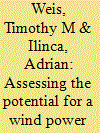

|
|
|
|
|
| Publication |
2010.
|
| Summary/Abstract |
This paper discusses the uptake potential for a wind-diesel production incentive designed specifically for Canadian northern and remote communities. In spite of having over 300 remote communities with extremely high electricity costs, Canada has had little success in developing remote wind energy projects. Most of Canada's large-scale wind power has been developed as a direct result of a Federal production incentive implemented in 2002. Using this incentive structure as a successful model, this paper explores how an incentive tailored to remote wind power could be deployed. Micro-power simulations were done to demonstrate that the production incentive designed by the Canadian Wind Energy Association would cost on average $4.7 $Cdn million and could be expected to result in 14.5 MW of wind energy projects in remote villages in Canada over a 10 year period, saving 11.5 $Cdn million dollars in diesel costs annually, displacing 7600 tonnes of CO2eq emissions and 9.6 million litres of diesel fuel every year.
|
|
|
|
|
|
|
|
|
|
|
|
|
|
|
|
| 2 |
ID:
192342
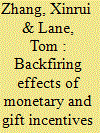

|
|
|
|
|
| Summary/Abstract |
We provide evidence that material inducements for Covid-19 vaccination may backfire. Results from a hypothetical survey experiment in China (N = 1365) show incentives of 8–125 USD reduce vaccine uptake intentions compared to simply offering vaccination for free. Ours is the first Covid-19 vaccine study to separately consider and directly compare the effects of monetary and goods-based incentives, both of which have been widely employed by countries seeking to increase uptake; we demonstrate that both types backfire equally. Results are compared against the burgeoning literature on Covid-19 vaccine incentives.
|
|
|
|
|
|
|
|
|
|
|
|
|
|
|
|
| 3 |
ID:
153387
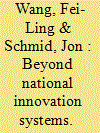

|
|
|
|
|
| Summary/Abstract |
This article describes the nature of innovation performance in the People’s Republic of China (PRC) in the context of its changing national innovation system (NIS). More specifically, it proposes to explain China’s lack of frontier innovation as reflected by the low quality of Chinese patents and scientific publications. Moving beyond the NIS—the prevailing framework for understanding national innovation rates—this article offers additional determinants to explain the unique profile of Chinese innovation. Through interviews with stakeholders from each of the three major NIS actor types and analysis of the incentive environment, two determinants of China’s high rate of nominal patenting are identified. First, the incentive structure facing inventors, scientists and entrepreneurs is found to be ill-suited to promoting innovation. Second, the ubiquitous officials-rank standard (guan benwei) is identified as a mediating variable that amplifies the effect of suboptimal incentives in promoting nominal (as opposed to real) innovation. In essence, the authors find that ill-structured innovation incentives and the officials-rank standard work in tandem to create a high proportion of nominal innovations in the PRC.
|
|
|
|
|
|
|
|
|
|
|
|
|
|
|
|
| 4 |
ID:
112266
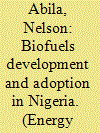

|
|
|
|
|
| Publication |
2012.
|
| Summary/Abstract |
Biofuels development and adoption in Nigeria has progressed significantly since the inception of the country's biofuel program in 2007. The rapid growth of the biofuels subsector in Nigeria inspired this review which aims at identifying the key drivers, agents, enablers, incentives and objectives driving the development. From the upstream to the downstream sub-sectors, there is an increasing entry of players and participants (private and public investors). This paper aims to explore the underlining drivers, enablers and incentives promoting the investments and participations in biofuels development, adoption and utilization in Nigeria. The research sourced data from basically secondary sources and undertook desk review of available information. The drivers identified are classified into the endogenous and exogenous categories. From the review, the paper presents a multi-components conceptual framework that captures key elements of the biofuel development in Nigeria.
|
|
|
|
|
|
|
|
|
|
|
|
|
|
|
|
| 5 |
ID:
118850


|
|
|
|
|
| Publication |
2013.
|
| Summary/Abstract |
Nigeria's economy is largely dependent on petroleum, yet the country is suffering from fuel supply shortages. In response to the transportation fuel supply difficulties in Nigeria, the country released the Nigerian Biofuel Policy and Incentives in 2007 to create favorable investment climate for the entrance of Nigeria into the biofuel sector. The paper assessed the progress made thus far by Nigeria, 4 years after the Nigerian biofuel was released in an attempt to answer the question whether the policy is adequate to transform Nigeria into a biofuel economy. The study found that little progress has been made, which includes commencement of the construction of 20 bioethanol factories, installation of biofuel handling facilities at two depots (Mosimi and Atlas Cove), and selection of retail outlets for biofuel/conventional fuel mix. The site construction of the announced biofuel projects is now slow and other progress is marginal. We therefore conclude that the Nigerian biofuel policy is unlikely to transform Nigeria into a biofuel economy unless the Government revert and refocus on biofuel and include additional financial incentives such as grants and subsidy to complement the tax waivers (income, import duty, VAT), loans, and insurance cover contained in the policy.
|
|
|
|
|
|
|
|
|
|
|
|
|
|
|
|
| 6 |
ID:
081994
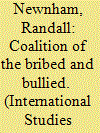

|
|
|
|
|
| Publication |
2008.
|
| Summary/Abstract |
When the United States invaded Iraq in 2003, critics referred to its allies not as the "Coalition of the Willing," but as the "Coalition of the Bribed, Bullied, and Blind." How accurate is this view? This paper will examine the role of American economic linkage as a policy tool in shaping the coalition. As we shall see, sometimes positive economic instruments were used, ranging from foreign and military aid to access to U.S. markets. For other countries negative linkage was used, that is, the threat of economic sanctions. In the end, such tactics were often effective. This helps demonstrate the relevance of economic linkage in forming alliances
|
|
|
|
|
|
|
|
|
|
|
|
|
|
|
|
| 7 |
ID:
178453
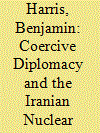

|
|
|
|
|
| Summary/Abstract |
Coercive diplomacy was utilized by a coalition of the United States, United Kingdom, France, Russia, China and Germany (collectively known as the P5+1) to negotiate an end to the Iranian nuclear crisis from 2002–2013. Eventually, this approach culminated in the Geneva interim agreement and the Joint Comprehensive Plan of Action in November 2013 and October 2015, respectively. This article charts the course of the P5+1’s coercive diplomacy efforts against Iran and demonstrates that coercive diplomacy pressured Iran to a point where the cost of continued resistance was too high to continue enduring. It shows that a combination of factors succeeded after 11 years of a coercive diplomacy strategy. These findings will have implications for policymaking and academia, as it is a rare illustration of successful, coalitional coercive diplomacy.
|
|
|
|
|
|
|
|
|
|
|
|
|
|
|
|
| 8 |
ID:
162276
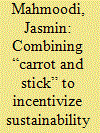

|
|
|
|
|
| Summary/Abstract |
Electrical utilities are a main stakeholder for achieving sustainable policy goals. Effective tariff designs that incentivize electricity savings among consumers can contribute to fulfilling these goals. Prior research suggests that penalties are more effective in promoting behavior change, which can be explained by insights from behavioral economics: Loss aversion describes that people react more strongly to losses (penalties) than to rewards of the same magnitude and go greater lengths to avoid them. However, in markets where consumers freely choose their preferred tariff, it remains a major challenge to persuade consumers to voluntarily subscribe to penalizing tariffs. The present study employed a choice experiment using choice-based conjoint analysis to examine consumer preferences for electricity tariffs that apply a combination of rewards and/or penalties for electricity consumption. Results from a representative sample of Swiss electricity consumers show that consumers prefer tariffs that reward decreases in electricity consumption, rather than tariffs that penalize increases in consumption, but that tariffs combining rewards and penalties achieve substantial potential market acceptance. Direct tariff attractiveness ratings additionally support these findings showing that consumers perceive combined Bonus-Malus tariffs as sufficiently attractive. Future research avenues and implications for marketing strategies and energy policies are discussed.
|
|
|
|
|
|
|
|
|
|
|
|
|
|
|
|
| 9 |
ID:
176817
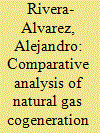

|
|
|
|
|
| Summary/Abstract |
An analysis to assess the influence of country-dependent variables and incentives on the feasibility of natural gas cogeneration projects in Latin America is presented in this work. The analysis is performed using a hypothetical industrial plant, where the cogeneration solution consists in the recovery of waste heat from the power generation for steam production. The feasibility is evaluated by calculating the Return of Investment (ROI) and the Internal Rate of Return (IRR) of the project. Eight Latin American countries are studied considering their specific natural gas markets, regulation, and macroeconomic variables. Two scenarios, electricity production for self-consumption and electricity production with power surplus sale, are independently analyzed considering the effects of available incentives. In the countries where the project is feasible, the application of incentives leads to a significant reduction in the ROI and, consequently, to an increment in the IRR. The effect of the interest rate and environmental impact were also analyzed. In general terms, along the region, the regulation for cogeneration is incipient while incentives are very standard and similar respect to lowering of import, Value-Added Tax (VAT), and income taxes, which seems to be designed purely to promote capital investment. Following the results from this study, it is of paramount importance to create new policy instruments in the future to advance the regulatory framework for cogeneration in Latin America.
|
|
|
|
|
|
|
|
|
|
|
|
|
|
|
|
| 10 |
ID:
159038
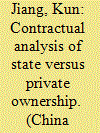

|
|
|
|
|
| Summary/Abstract |
We uniquely analyze the advantages and disadvantages of private ownership versus state ownership under various circumstances by focusing on three aspects: external risk, internal governance, and relative importance of owners versus managers. Our theoretical analysis indicates that private ownership is better than state ownership if the business environment is risky, corruption is limited, or the manager plays a more important role than the owner. Our empirical analysis supports our theoretical findings and reveals that better internal governance, more external risk and greater importance of the manager will magnify the benefits of privatization.
|
|
|
|
|
|
|
|
|
|
|
|
|
|
|
|
| 11 |
ID:
180098
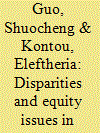

|
|
|
|
|
| Summary/Abstract |
The path towards light-duty vehicle electrification promises benefits like lower costs for drivers and reduced environmental externalities for all. Incentives such as electric vehicle rebates assist with alleviating high capital costs of alternative fuel cars. We uncover distributional effects of plug-in electric vehicle rebates, focusing on a program in the State of California. We use economic attributes representative of populations of census tracts as well as data on rebates distributed to plug-in electric vehicle buyers through the Clean Vehicle Rebate Project from 2010 to 2018. Horizontal and vertical equity measures are evaluated, while measurement of spatial association characterizes spatial patterns of rebates allocation across the State. We evaluate the distributional fairness of rebates allocation between income groups and disadvantaged communities. We find that rebates have been predominantly given to high income electric vehicle buyers. However, the share of rebates distributed to low-income groups and disadvantaged communities increased over time and after an income-cap policy was put into effect. Spatial analysis shows high spatial clustering effects and rebates concentration in major metropolitan regions. We reveal neighborhood effects: communities with lower median income or disadvantaged receive higher rebate amounts when these are geographic neighbors to clusters characterized as high rebate amount receivers.
|
|
|
|
|
|
|
|
|
|
|
|
|
|
|
|
| 12 |
ID:
176856
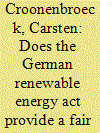

|
|
|
|
|
| Summary/Abstract |
We assess the German renewable energy incentive system for onshore wind power installations and provide a spatial profitability analysis for any given point in Germany. As it turns out, the system seems to favor certain types of facilities, dependent on the wind conditions at the site. We therefore narrow the focus down and analyze a limited set of locations selected at random. Here, we use a simulation analysis to assess the sensitivity of profitability on wind speeds, hub heights, and turbine types. Results show that increasing hub heights are not generally increasingly profitable — on the contrary, the German incentive system rather tends to favor lower hub heights. Also, the selected turbine type still has its impact on profitability — not at a great magnitude, but nevertheless gaugeable. In conclusion, the German renewable energy support system might be somewhat off target, as it possesses possibly unwanted side effects of which policy makers may not be aware.
|
|
|
|
|
|
|
|
|
|
|
|
|
|
|
|
| 13 |
ID:
150832
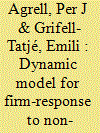

|
|
|
|
|
| Summary/Abstract |
Economic network regulation increasingly use quantitative performance models (from econometrics and engineering) to set revenues. In theory, high-powered incentive regulation, such as revenue-caps, induces firms to cost-efficient behavior independent of underlying model. However, anecdotal evidence shows regulated firms occasionally maintaining cost-inefficiency under incentive regulation even under slumping profitability. We present a model for firm-level efficiency under a regime with a probability of failure explaining this phenomenon. The model is based on the hypothesis that the regulatory choice of method can be associated with intrinsic flaws leading to judicial repeal and replacement of it by a low-powered regime. The results show that the cost efficiency policy is proportional to the type of firm (cost of effort), value of time (discount factor) and the credibility of the method (risk of failure). A panel data set for 2000–2006 for 128 electricity distributors in Sweden is used to validate the model predictions (radical productivity slowdown, failing profitability and efficiency) at the launch and demise of a non-credible regulation method. The work highlights the fallacy of viewing incentive regulation as a method-independent instrument, a result applicable in any infrastructure regulation.
|
|
|
|
|
|
|
|
|
|
|
|
|
|
|
|
| 14 |
ID:
116742


|
|
|
|
|
| Publication |
2012.
|
| Summary/Abstract |
Energy use per square foot from science research labs is disproportionately higher than that of other rooms in buildings on campuses across the nation. This is partly due to labs' use of energy intensive equipment. However, laboratory management and personnel behavior may be significant contributing factors to energy consumption. Despite an apparent increasing need for energy conservation in science labs, a systematic investigation of avenues promoting energy conservation behavior in such labs appears absent in scholarly literature. This paper reports the findings of a recent study into the energy conservation knowledge, attitude and behavior of principle investigators, laboratory managers, and student lab workers at a tier 1 research university. The study investigates potential barriers as well as promising avenues to reducing energy consumption in science laboratories. The findings revealed: (1) an apparent lack of information about options for energy conservation in science labs, (2) existing operational barriers, (3) economic issues as barriers/motivators of energy conservation and (4) a widespread notion that cutting edge science may be compromised by energy conservation initiatives.
|
|
|
|
|
|
|
|
|
|
|
|
|
|
|
|
| 15 |
ID:
069790


|
|
|
| 16 |
ID:
149831
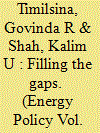

|
|
|
|
|
| Summary/Abstract |
SIDS have both opportunities and challenges – economic, social and environmental vulnerability – for low carbon development. Economically, they are highly dependent on international trade; they have limited domestic markets, too small to provide significant scale economies; their exports are constraint by their isolation and remote location. We provide an overview of current energy situation in SIDS, their goals to adopt low carbon economic development paths, policies already in place or required to achieve the goals and challenges to implement their plans and strategies. The focus is on energy policy landscape that needs to be addressed in order to scale-up renewable energy technologies needed to stimulate low carbon economic growth. We find that SIDS face four key barriers to renewable energy development: information to improve the energy information network by strengthening existing information systems and building awareness of renewable energy; financing mechanisms for renewable energy projects, including regional loan structures and technical assistance to banks; policy supports to implement regulatory frameworks that enable renewable energy development; and building technical capacity among players in the renewable energy field. We recommend “policy enablers” that underlie what could positively impact on renewable energy goals and more broadly energy efficiency and climate change.
|
|
|
|
|
|
|
|
|
|
|
|
|
|
|
|
| 17 |
ID:
121265
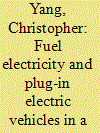

|
|
|
|
|
| Publication |
2013.
|
| Summary/Abstract |
Electricity is unique among the alternative fuels in a low carbon fuel standard (LCFS) policy, in that demand from vehicles is the major barrier to its usage, not supply. This paper presents a policy discussion and policy recommendations on a number of topics related to the regulation and incentives for fuel electricity within the LCFS. In the near-term, the LCFS will have a limited role in incentivizing the use of electricity and lowering the carbon intensity of electricity, and electricity will play a small role in meeting LCFS targets. Calculating a carbon intensity value for electricity is a complex process, requiring many decisions and trade-offs to be made, including allocation methods, system boundaries, temporal resolution and how to treat electricity demand for vehicle charging. These choices along with other regulatory decisions about who can obtain LCFS credits will influence the incentives for providing electricity and charging infrastructure relative to other low-carbon fuels as well as across different electricity providers. The paper discusses how fuel electricity would fit into an LCFS, identifying those special characteristics that could reduce the effectiveness of the policy. It also provides specific recommendations to enable better policy design that appropriately incentivizes the use of low-carbon fuels.
|
|
|
|
|
|
|
|
|
|
|
|
|
|
|
|
| 18 |
ID:
183605
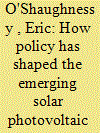

|
|
|
|
|
| Summary/Abstract |
Hundreds of state and local policies support the deployment of residential-scale solar photovoltaic systems in the United States. Policy differences across jurisdictions may explain differences in local photovoltaic industries, such as the number of competing installers, the distribution of market shares among those installers, and the market shares of large national-scale installers in local markets. This paper explores this hypothesis through a novel econometric model, the results of which suggest that various state and local policies indeed shape emerging photovoltaic industries. The results suggest that policies that generate higher customer electricity cost savings yield markets with more installers while higher levels of up-front photovoltaic subsidies produce markets with fewer installers. Further, both up-front subsidies and ongoing incentives yield markets where national-scale installers hold less market share. These results indicate that policies have long-term indirect impacts on photovoltaic markets by shaping nascent installation industries. Policymakers could use the results to identify and design policies that help raise infant installation industries to maturity.
|
|
|
|
|
|
|
|
|
|
|
|
|
|
|
|
| 19 |
ID:
166337
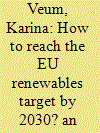

|
|
|
|
|
| Summary/Abstract |
In the absence of post-2020 national binding renewable energy (RES) targets, ensuring Member States’ contributions which add up to the EU-level target by 2030 poses a challenge to the EU governance framework. Even without national targets, Member States remain key players to reach a 2030 RES target.
|
|
|
|
|
|
|
|
|
|
|
|
|
|
|
|
| 20 |
ID:
171406
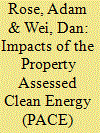

|
|
|
|
|
| Summary/Abstract |
The Property Assessed Clean Energy (PACE) Program is an innovative financing approach to meeting environmental goals. PACE financing is structured as an assessment to the property and paid along with the property tax bill. In addition to the direct environmental benefits, it also yields co-benefits of enhanced economic output and employment. This paper estimates the economic impacts of PACE in California by one of its major financing companies. These impacts include direct spending on structural improvements, reduction in spending on centralized power and water services, reallocation of spending from energy and water bills savings, and solar investment tax credits, among others. It also includes general equilibrium effects of these various factors. Our results indicate PACE financing yields sizable economic benefits. At the same time, the increased economic activity results in increased energy and water use that partially offsets some of the direct environmental gains. Furthermore, PACE has been subject to criticism because it gives financing companies the first lien on mortgages and because of anecdotal examples of some customers being lured by unscrupulous contractors. The direct environmental benefits and economic co-benefits of PACE should be factored into the policy debate over whether the Program should be further expanded or regulated.
|
|
|
|
|
|
|
|
|
|
|
|
|
|
|
|
|
|
|
|
|